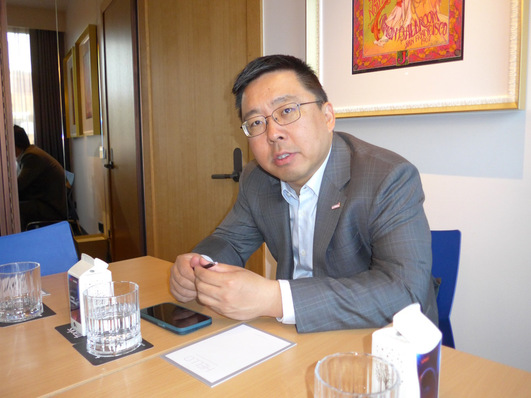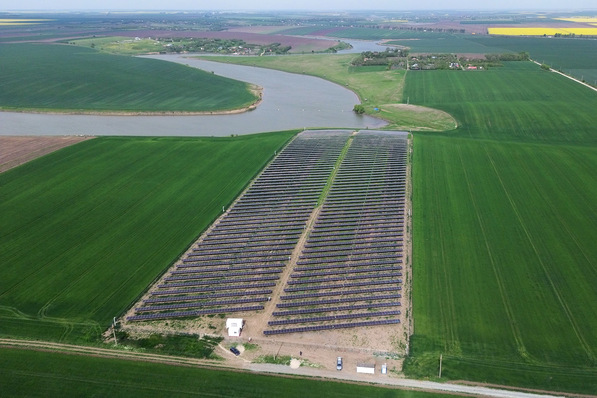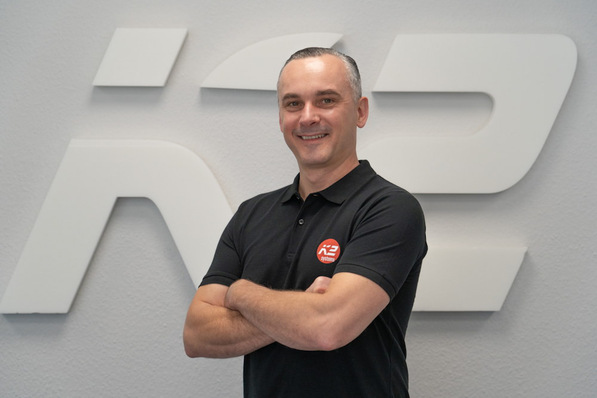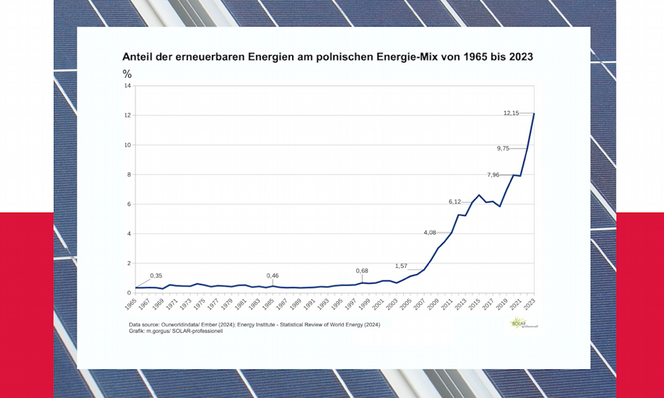According to the German Solar Industry Association (BSW), the PV business climate index in Germany is currently at an all-time high. Photovoltaic demand in Germany increased by 32 percent in the first quarter of 2022 compared to the same period last year, BSW CEO Carsten Körnig reported at the opening press conference of The smarter E Europe in Munich. The global picture is similar. For this year, the industry association Solarpower Europe expects a global addition of photovoltaics of around 230 gigawatts (GW), compared with 181 GW last year.
In the twelve exhibition halls of The smarter E Europe 2022, it was almost impossible to get through in many cases, so great was the rush. From May 11 to 13, 1346 exhibitors from 46 countries presented their latest products, solutions and business models for photovoltaics, energy storage, e-mobility and smart grids. More than 65,000 trade visitors from 149 countries came, the organizer had expected 50,000.
It was obvious that ambitious climate protection targets, massively increased prices for fossil energies and current geopolitical developments are giving the market of the "new energy world" another boost. There were no literal "revolutions" to be seen at the four energy trade fairs (Intersolar Europe, ees Europe, Power2Drive Europe, EM-Power Europe) under the umbrella of The smarter E in Munich.
More connected and more powerful - opening up new areas
However, the various components for a renewable energy supply are increasingly growing together, becoming more powerful, more efficient and in many cases easier to install and more flexible to use. The use of artificial intelligence is becoming more and more standard, whether for optimizing the electricity yield from one's own roof, grid stabilization through the latest generation of inverters and battery storage systems, or time-delayed, solar charging of electric cars.
Another trend that emerged was that photovoltaic systems and energy storage systems are becoming ever larger and more powerful: Be it that private households or commercial enterprises can increasingly use self-generated solar power for heating (e.g. via heat pumps) or for electric vehicles. Or that solar parks in the triple-digit megawatt range in Germany also produce solar power as cost-effectively as possible for companies, which purchase it via multi-year supply contracts (PPAs).
In addition, there is the development of new areas for photovoltaics via building-integrated photovoltaics (BIPV) or vehicles, the combination with agricultural production via Agri-PV or floating solar parks on inland waterways and, more recently, offshore at sea. Solar production of green hydrogen was also a mega-topic at the trade show in Munich.
Innovative mounting systems
Exhibitors such as Esdec from the Netherlands showed how technical optimizations even in the "basic framework" of photovoltaic systems, the mounting systems, help to install the solar modules on roofs as quickly as possible - and thus in a cost-saving manner - and at the same time safely and reliably.
They presented their latest generation of "Flatfix" mounting racks for commercial PV roofs, which can be attached to fold-out, pre-assembled rails without tools. According to Eva Belletti, Managing Director for Esdec's project business, this offers advantages especially for roof mounting of large solar modules with a width of up to 1149 millimeters.
Bigger and greener PV modules
High-performance modules with larger wafers measuring 182 x 182 millimeters or 210 x 210 millimeters have now become the new standard in many cases. Chinese manufacturer Trina Solar, for example, showed its latest generation of silicon-based Vertex PV modules in the 210 mm format with an output of up to 580 watts and an efficiency of 21.5 percent for rooftop applications. The trend is also toward "greener" modules. For example, REC Solar offers a lead-free PV module from its Alpha Pure series with a module efficiency of 22.3 percent, which won one of this year's Intersolar awards.
Another Intersolar award went to M10 Solar Equipment of Freiburg, Germany, for its Surface Shingle Matrix System for solar cells, which enables lightweight and more shade-tolerant solar modules that can also be used on facades or vehicles. The solar cells, cut into six strips, are precisely bonded together with a small overlap using a conductive adhesive. This also minimizes the consumption of materials and thus resources.
Modular and expandable in vogue
Smaller modules, which flexibly utilize somewhat complicated roof surfaces and can also be mounted "in-roof", i.e. replace the roof, were also shown at the trade fair by Goodwe (China), for example, originally a pure inverter manufacturer.
State-of-the-art are expandable or modular inverters and batteries that can be flexibly designed depending on the application. The classic home storage system is BYD's Battery Box with plug-in modules. It is now also offered for commercial and industrial applications with a capacity of 30 to 90 kWh and can be increased to 5.76 MWh by connecting up to 64 systems in parallel. Huawei and Sungrow also presented expandable, modular battery systems for large-scale storage applications - such as grid stabilization - as well as inverters and battery inverters in a wide range of power and size classes.
Well-known inverter manufacturers now consistently offer wallboxes for charging e-vehicles at home that can be integrated into energy management systems. For example, the Wattpilot from Fronius (Austria), which won this year's The Smarter E Award, is an AC charging solution for charging from your own power generation at flexible electricity prices.
The Fronius wallbox features automatic 1/3 phase switching for optimized charging of an electric vehicle across the entire power band from 1.38 to 22 kilowatts. According to the jury, fluctuating surpluses from the company's own generation can be optimally utilized. Vehicles that have lapsed into charging sleep are woken up automatically. In addition to the use of self-generated energy, the integrated connection to an electricity provider with flexible electricity prices (currently available in Germany and Austria) enables cost-optimized charging in favorable price phases, according to the jury's statement.
Second life batteries
Also on the rise is the use of used batteries (second life/second use) from e-cars for stationary storage applications. An innovation from Fenecon (Germany) also won The smarter E Award. The stationary storage system consists of both car batteries that are still unused (Zero Use) and batteries that were already in use in Renault Zoe (Second Use). It also serves as a spare battery storage facility for the manufacturer to keep on hand. In one container unit, 72 Zoe batteries, each with 40 kilowatt hours, are combined to form a storage system with a capacity of 2.88 megawatt hours. The storage system can be used for grid stabilization or energy management, among other things.

Solar Promotion
The development of additional areas for photovoltaics on water via floating solar parks (floating PV) is also a strong trend. In addition to systems on inland waterways, which BayWa r.e., for example, has already implemented many times, the focus in Munich was also on systems in the offshore marine area. Norway dedicated a separate session to this topic.
Companies such as Moss Maritime, which has decades of offshore expertise in oil and gas production, presented plans for the construction of the first pilot plants on floating pontoons in the open sea. Challenges here include design for high waves, corrosion resistance and standardization of the systems, as Alexander Minge Thogersen, vice president of engineering at Moss Maritime reported. Linkages with offshore wind as well as green hydrogen production are also being considered.
Higher prices and delivery times - but demand unabated
Increased costs and prices as well as delivery bottlenecks as a result of the Corona pandemic and the Russian war of aggression in Ukraine determined many conversations and discussions at the trade show. In many cases, PV companies reported price and cost increases of 15 to 20 percent, which, however, as well as longer delivery times, were mostly "swallowed" by customers and did not slow down the high demand.
There is a clear trend towards diversification of supply chains. Among other things, the potential of Scandinavian countries for supplying European solar module manufacturers with silicon wafers was presented in Munich. However, there is still a long way to go before the European solar industry achieves a renaissance in the gigawatt or even terawatt range and reduces its heavy dependence on China, as was made clear at The smarter E Europe. (hcn)
See our PV Guided Tours and CEO Talks from The smarter E Europe 2022 on video







